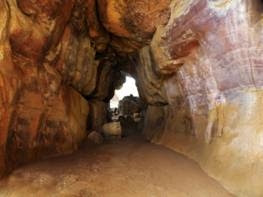The highest tea estate in the world at 8,000 feet, Munnar, Kerala
Thirty-five km outside of Munnar, India, the Kolukkumalai Tea Estate is built high atop the precipitous ridge that rises above the plains. Known for its excellent, flavorsome teas, this estate is also known for its panoramic views and the for the rugged mountains that surround it.
It's remote - it takes about 90 minutes to reach Kolukkumalai from Munnar - but on clear nights, you can see Kodaikanal from the estate because of its height. The factory at the center of the estate has stood for several generations, having been built more than 70 years ago. It uses traditional techniques even today that serve as a draw for tea enthusiasts. Orthodox tea-making is a seven-step process that includes withering, rolling, sieving, fermenting, drying, fiber extraction, and grading. All of this work happens in the small factory that has not been changed since the British constructed it in the 1930s.
The estate was the 2005 Southern Tea Competition winner of the Golden Leaf India Awards.





















